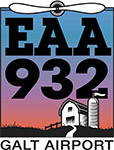The term ʺstabilized approachʺ often appears as something of a buzzword in articles and incident reports, as in, ʺThe pilot failed to establish a stabilized approach.ʺ I get the general idea, but when is an approach actually considered ʺstabilized?ʺ
The concept of a stabilized approach was first introduced by the airlines in the 1950s and has since that time become standard operating procedure for commercial operations. Stabilized approaches are equally important to general aviation and an understanding of a stabilized approach, including energy management concepts, is required by the Private Pilot Airplane Airman Certification Standards (ACS).
There are several obvious cues that indicate if our approach is stabilized or not. For example, if our airspeed is too fast, if we are descending too rapidly or we are having trouble staying aligned with the runway centerline, these are all signs that we will not be able to execute an ideal touchdown in the center of the first third of the runway.
The stabilized approach concept gives us a more specific set of criteria as well as a decision height for judging when we should execute a go‐around.
The best way to achieve a safe landing is when all of the following criteria are maintained from 1,000 feet height above touchdown (HAT) in instrument meteorological conditions (IMC), and from 500 feet HAT in visual meteorological conditions (VMC).
The airplane must be on the correct track. For VFR flights this means aligned with the correct runway centerline and for IFR this means no more than normal bracketing corrections. The airplane is in the proper landing configuration, which means gear extended and flaps and trim set as required. The airplane speed is consistently within the acceptable range specified in the approved operating manual and no excessive pitch changes are required. The rate of descent is less than 1,000 fpm and +/‐ 300 fpm deviation from target. Your power setting is appropriate for the landing configuration selected and is within the permissible power range for an approach specified in the approved operating manual.
The airplane is within the desired glide path profile (usually a 3 degree descent angle) and requires no more than normal bracketing corrections.
All appropriate briefings and checklists have been accomplished.
The runway is clear and at a towered airport, you are cleared to land.
An immediate go‐around is recommended if you are not stabilized by the appropriate altitude. You should not try to “salvage” the landing from an approach that is outside of any of these tolerances within 500 feet of the ground.
Many things can contribute to a destabilized approach such as maneuvering to avoid traffic or complying with last minute air traffic control (ATC) instructions as well as other distractions or poor flying technique. Pilots should always be prepared and willing to execute a go‐around if necessary and the stabilized approach criteria provide a common set of reliable standards we can all use to make that decision.
Beth Rehm, CFI
JB Aviation Flight Training

